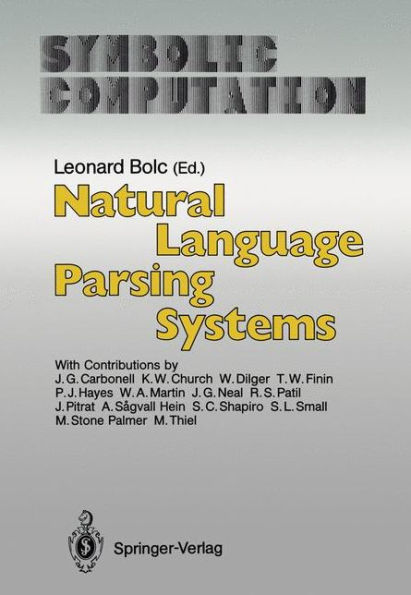Natural Language Parsing Systems
Up to now there has been no scientific publication on natural language research that presents a broad and complex description of the current problems of parsing in the context of Artificial Intelli gence. However, there are many interesting results from this domain appearing mainly in numerous articles published in pro fessional journals. In view of this situation, the objective of this book is to enable scientists from different countries to present the results of their research on natural language parsing in the form of more detailed papers than would be possible in professional jour nals. This book thus provides a collection of studies written by well known scientists whose earlier publications have greatly contributed to the development of research on natural language parsing. Jaime G. Carbonell and Philip J. Hayes present in their paper "Robust Parsing Using Multiple Construction-Specific Strategies" two small experimental parsers, implemented to illustrate the advantages of a multi-strategy approach to parsers, with strategies selected according to the type of construction being parsed at any given time. This presentation is followed by the description of a parsing algorithm, integrating some of the best features of the two smaller parsers, including case-frame instantiation and partial pat tern-matching strategies.
1000227979
Natural Language Parsing Systems
Up to now there has been no scientific publication on natural language research that presents a broad and complex description of the current problems of parsing in the context of Artificial Intelli gence. However, there are many interesting results from this domain appearing mainly in numerous articles published in pro fessional journals. In view of this situation, the objective of this book is to enable scientists from different countries to present the results of their research on natural language parsing in the form of more detailed papers than would be possible in professional jour nals. This book thus provides a collection of studies written by well known scientists whose earlier publications have greatly contributed to the development of research on natural language parsing. Jaime G. Carbonell and Philip J. Hayes present in their paper "Robust Parsing Using Multiple Construction-Specific Strategies" two small experimental parsers, implemented to illustrate the advantages of a multi-strategy approach to parsers, with strategies selected according to the type of construction being parsed at any given time. This presentation is followed by the description of a parsing algorithm, integrating some of the best features of the two smaller parsers, including case-frame instantiation and partial pat tern-matching strategies.
109.99
In Stock
5
1

Natural Language Parsing Systems
367
Natural Language Parsing Systems
367Paperback(Softcover reprint of the original 1st ed. 1987)
$109.99
109.99
In Stock

Product Details
| ISBN-13: | 9783642830327 |
|---|---|
| Publisher: | Springer Berlin Heidelberg |
| Publication date: | 12/08/2011 |
| Series: | Symbolic Computation |
| Edition description: | Softcover reprint of the original 1st ed. 1987 |
| Pages: | 367 |
| Product dimensions: | 6.69(w) x 9.61(h) x 0.03(d) |
From the B&N Reads Blog
